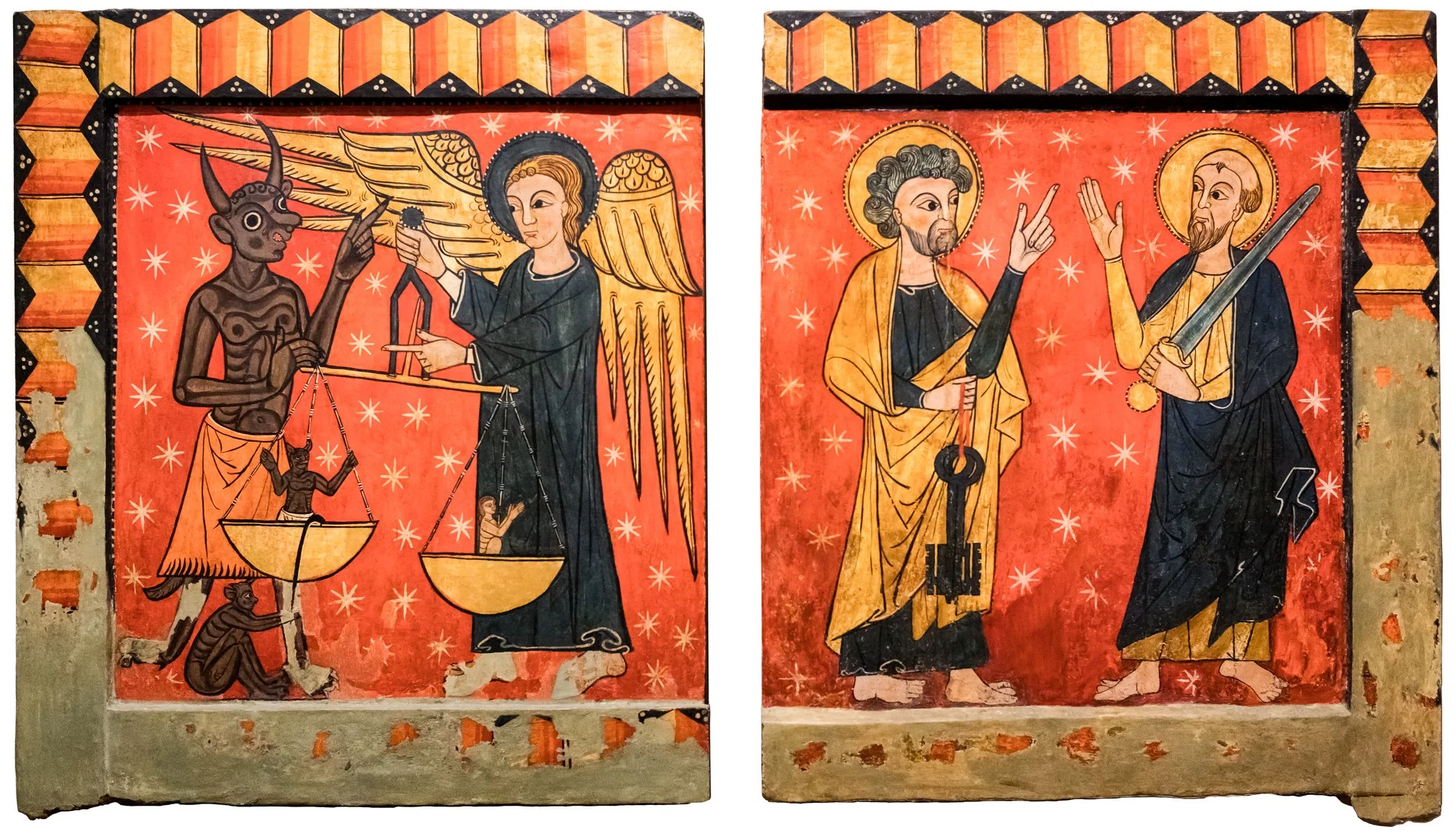The Psychostasis and the Apostles Peter and Paul, late 13th century. Panels attributed to the Master of Soriguerola. Tempera on wood, originally part of an altar ensemble from the Vall de Ribes, Catalonia. On the left, Archangel Michael weighs a soul while a demon attempts to tip the scales toward damnation. On the right, Saints Peter and Paul stand in dialogue, representing apostolic authority and intercession. Housed in the MEV – Museu Episcopal de Vic, Spain.
In the quiet valley of Ribes, nestled in the Catalan Pyrenees, two painted wooden panels once flanked an altar—powerful fragments of medieval imagination and faith. Today, they hang in the MEV – Museu Episcopal de Vic, a museum dedicated to medieval art in the heart of Catalonia.
These panels are attributed to a mysterious but distinctive painter known only as the Master of Soriguerola, active in the late 13th century. Working at the crossroads of Romanesque tradition and Gothic expression, his style is unmistakable: vibrant red, yellow, and green backgrounds, boldly outlined figures, and a gift for compressing complex religious ideas into clear, almost theatrical scenes.
The first panel shows Archangel Michael weighing souls—a theme known as the psychostasis. A naked soul balances on the scales of judgment. One side sinks gently toward salvation, but a hook-wielding demon clings to the other, trying to tip the balance toward damnation. It's one of the most compelling and popular images in medieval Catalan art: spiritual justice captured in a single, tense moment.
The companion panel shifts from judgment to intercession. Saint Peter, holding the keys to Paradise, and Saint Paul, the apostle to the nations, stand in quiet conversation. Between them, a small, pleading soul looks upward. There is no chaos here—just a delicate moment of mercy, rendered with both humility and authority.
Together, these panels explore the fate of the soul after death—first weighed by divine justice, then offered the hope of salvation through apostolic intercession. And they do so with a visual clarity and emotional impact that mark the Master of Soriguerola as one of the most compelling voices in Catalan art of the time.
Though we don’t know his real name, we still recognize his hand. And through it, we glimpse a medieval world grappling with eternal questions, expressed in color, line, and faith.

















